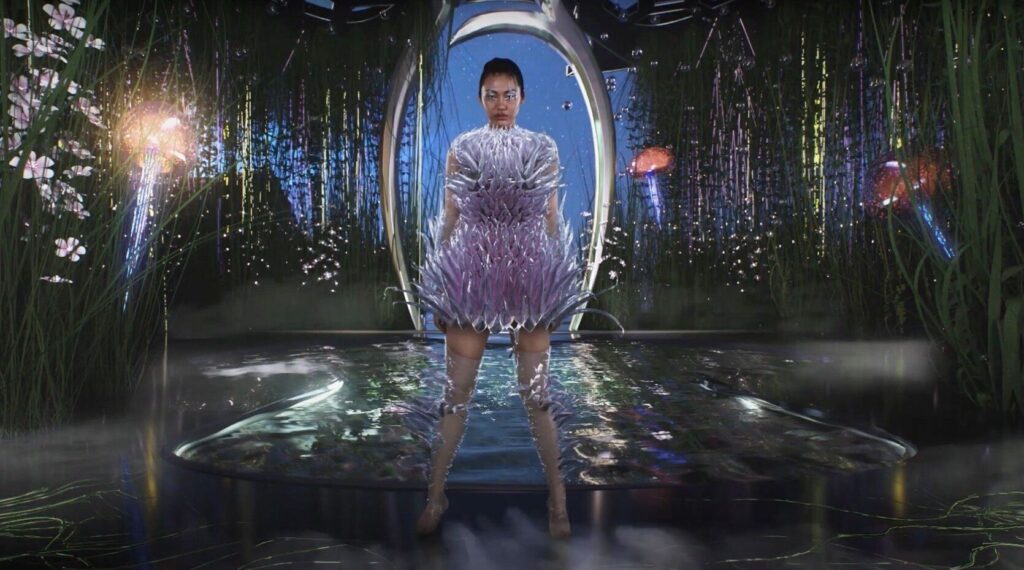The rise of digital fashion and virtual clothes in a virtual world marks a revolutionary shift in how we perceive and engage with clothing. As technology advances, the boundaries between the physical and digital realms blur, giving birth to a new era of fashion that transcends traditional limitations. Virtual clothing, powered by innovative design software and immersive platforms, allows users to express their individuality in ways previously unimaginable. This phenomenon is not just a trend; it represents a fundamental change in consumer behavior and the fashion industry as a whole.
In this article, we will delve into the fascinating world of digital fashion, exploring its origins, current trends, and the technology that drives it. You will learn about the various platforms where virtual clothes are showcased and sold, as well as the impact of social media on this burgeoning industry. Additionally, we will discuss the environmental benefits of digital fashion, highlighting how it offers a sustainable alternative to fast fashion. As we navigate through these topics, you will gain insights into how digital fashion is reshaping the future of style and self-expression.
Join us on this exciting journey as we uncover the potential of virtual clothing and its implications for the fashion landscape. Whether you are a fashion enthusiast, a tech-savvy individual, or simply curious about the future of style, this article promises to provide valuable information and inspire you to embrace the digital revolution in fashion. Read on to discover how virtual clothes are not just a passing fad, but a significant evolution in the way we dress and present ourselves in a digital world.
Digital fashion is rapidly transforming the way we perceive clothing and self-expression in virtual environments. As technology advances, virtual clothes are becoming more than just a trend; they are a new form of identity and creativity. This article explores various aspects of digital fashion, highlighting its significance in today’s digital landscape.
The Evolution of Fashion in the Digital Age
The journey of fashion from physical to digital has been remarkable. Initially, fashion was confined to physical garments, but with the advent of technology, designers began to explore virtual clothing. This evolution has been driven by the rise of social media, online gaming, and virtual reality platforms, where users seek unique ways to express themselves.
As digital platforms gained popularity, fashion brands recognized the potential of virtual clothing. They started creating digital collections that could be worn in virtual environments, allowing users to showcase their style without the limitations of physical materials. This shift not only democratizes fashion but also opens up new avenues for creativity and innovation.
The Role of Virtual Reality and Augmented Reality
Virtual reality (VR) and augmented reality (AR) technologies play a crucial role in the rise of digital fashion. These technologies enable users to immerse themselves in virtual worlds where they can try on and interact with digital clothing. This immersive experience enhances the shopping process, making it more engaging and personalized.
Brands are leveraging VR and AR to create virtual showrooms and fashion shows, allowing consumers to experience collections in a dynamic way. This not only increases brand visibility but also fosters a deeper connection between consumers and the products they love. As these technologies continue to evolve, the possibilities for digital fashion are limitless.
Sustainability and Ethical Considerations
One of the most significant advantages of digital fashion is its potential for sustainability. Traditional fashion production often leads to waste and environmental harm, but virtual clothing eliminates these issues. By creating digital garments, brands can reduce their carbon footprint and promote ethical consumption.
Moreover, digital fashion allows for experimentation without the need for physical resources. Designers can create and showcase their work without the constraints of material costs, leading to more innovative and sustainable practices. As consumers become more environmentally conscious, the demand for digital fashion is likely to grow.
The Impact of Social Media on Digital Fashion
Social media platforms have become a driving force behind the popularity of digital fashion. Influencers and content creators showcase virtual outfits, inspiring their followers to explore this new realm of self-expression. Platforms like Instagram and TikTok are filled with users sharing their digital fashion experiences, creating a vibrant community around virtual clothing.
This social media influence has led to collaborations between fashion brands and digital artists, resulting in unique collections that resonate with a tech-savvy audience. As social media continues to shape trends, digital fashion is poised to become a staple in the online world.
The Future of Fashion Shows and Events
Fashion shows have traditionally been exclusive events, but the rise of digital fashion is changing this landscape. Virtual fashion shows allow brands to reach a global audience, breaking down geographical barriers. These events can be streamed online, enabling anyone to participate and experience the latest trends.
Additionally, digital fashion shows can incorporate interactive elements, allowing viewers to engage with the collection in real-time. This shift not only democratizes fashion but also creates new opportunities for brands to connect with consumers in innovative ways.
The Intersection of Gaming and Fashion
The gaming industry has become a significant player in the digital fashion space. Many games now offer players the ability to customize their avatars with virtual clothing, creating a demand for unique and stylish digital outfits. This intersection of gaming and fashion has led to collaborations between fashion brands and game developers, resulting in exclusive virtual collections.
As gaming continues to grow in popularity, the influence of digital fashion within this realm will likely expand. Players are increasingly seeking ways to express their individuality through their avatars, making virtual clothing an essential aspect of the gaming experience.
The Economic Potential of Digital Fashion
The economic implications of digital fashion are significant. As more consumers embrace virtual clothing, brands are finding new revenue streams through digital collections. Virtual garments can be sold as NFTs (non-fungible tokens), allowing designers to monetize their creations in innovative ways.
This shift towards digital fashion also opens up opportunities for emerging designers to showcase their work without the financial burden of physical production. As the market for digital fashion grows, it is likely to attract investment and drive innovation within the industry.
Challenges and Limitations of Digital Fashion
Despite its many advantages, digital fashion faces challenges that must be addressed. One major concern is the perception of virtual clothing as less valuable than physical garments. Overcoming this stigma will require education and awareness about the benefits and possibilities of digital fashion.
Additionally, the technology required to create and experience digital fashion can be a barrier for some consumers. Ensuring accessibility and usability will be crucial for the widespread adoption of virtual clothing. As the industry evolves, addressing these challenges will be essential for the future of digital fashion.
| Aspect | Description |
|---|---|
| Definition | Digital fashion refers to clothing that exists only in digital form, designed for virtual environments such as video games, social media, and virtual reality. |
| Growth Factors | The rise of social media, online gaming, and virtual reality platforms has created a demand for unique digital clothing that allows users to express their identity in virtual spaces. |
| Environmental Impact | Digital fashion is seen as a sustainable alternative to traditional fashion, as it reduces waste and the carbon footprint associated with physical clothing production. |
| Market Trends | Brands are increasingly collaborating with digital fashion designers to create virtual collections, which can be worn by avatars in online environments. |
| Consumer Engagement | Digital fashion allows for interactive experiences, where consumers can try on clothes virtually and participate in fashion shows in the metaverse. |
| Future Prospects | The future of digital fashion looks promising, with advancements in technology such as augmented reality (AR) and blockchain, which can enhance the authenticity and ownership of virtual garments. |




